The building at 2/C Vas Street, which is currently owned by the University of Theatre and Film Arts, was originally built by the Hungarian branch of the Young Men's Christian Association (YMCA). The construction of the organisation's new headquarters – named after Count Pál Teleki – was completed in 1943. Kálmán Tóth and Lajos Várady Szabó created the designs. Standing in Józsefváros, the building included offices and guest rooms spread over several floors. The Protestant Garrison Church opened from the white-marble foyer of the modern building and was consecrated on 5 December 1943 by Bishop László Ravasz.
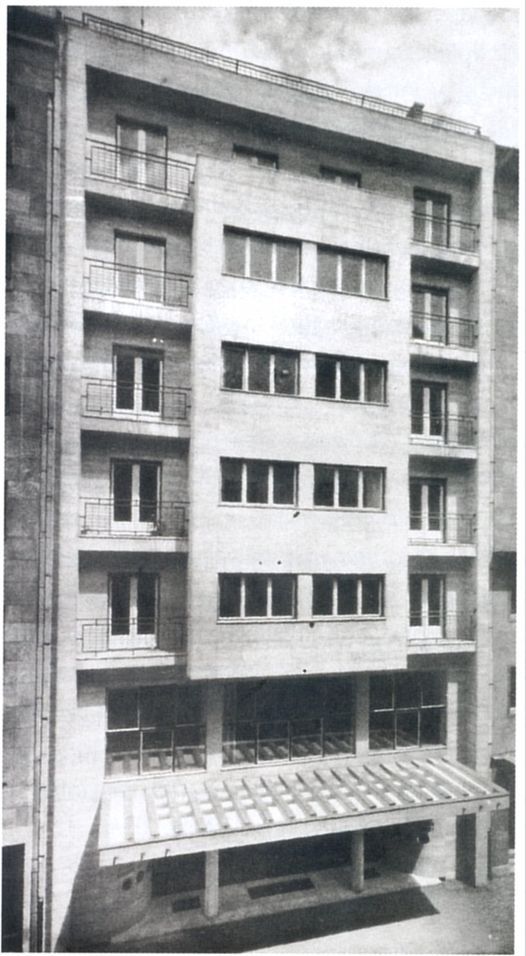
The facade of 2/C Vas Street (Source: Építészet, 1944. iss. 2)

The main street entrance in 1944 (Source: Építészet, 1944. iss. 2)
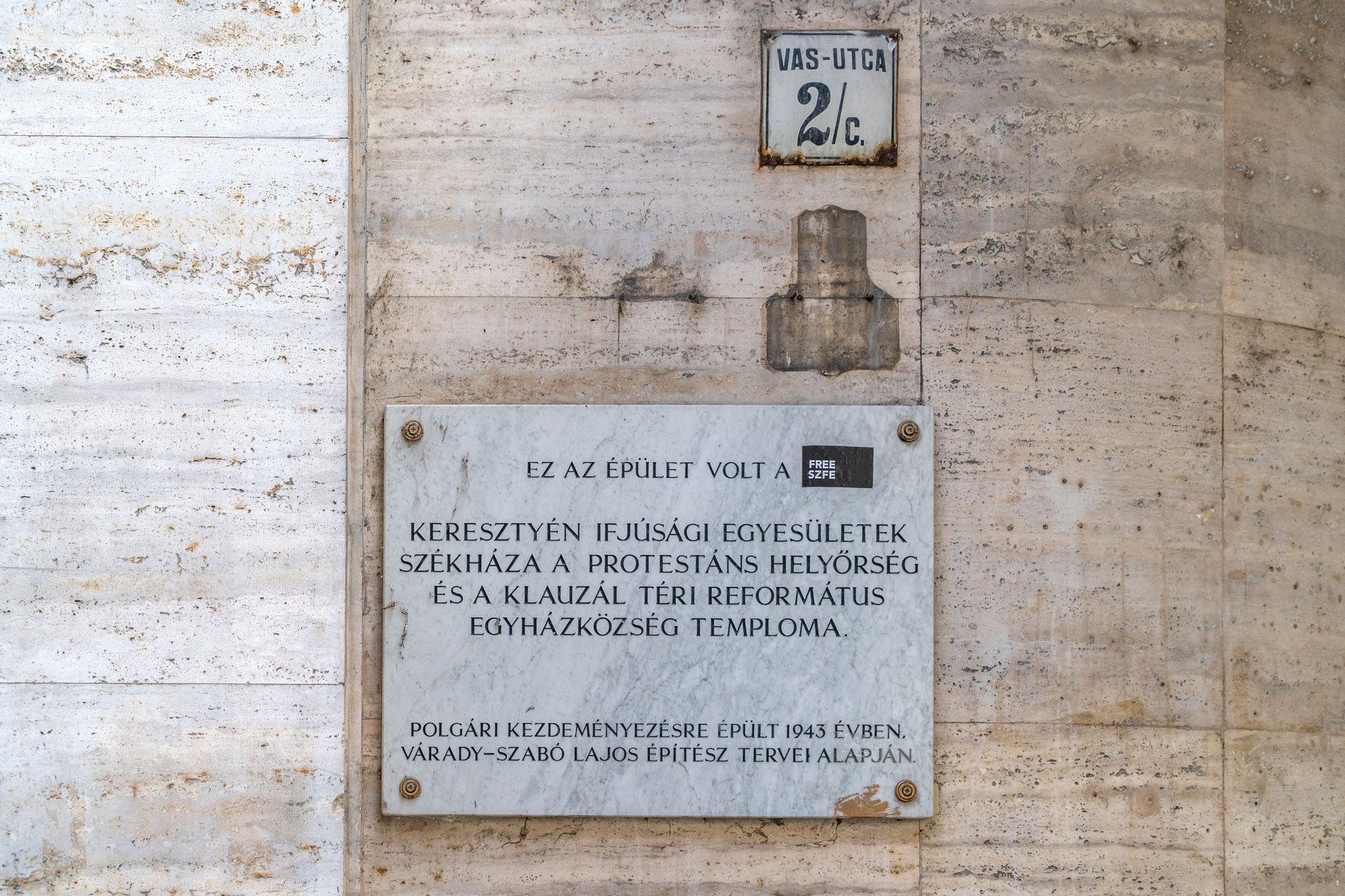 Memorial plaque on the wall of the building today (Photo: Balázs Both/Pestbuda.hu)
Memorial plaque on the wall of the building today (Photo: Balázs Both/Pestbuda.hu)
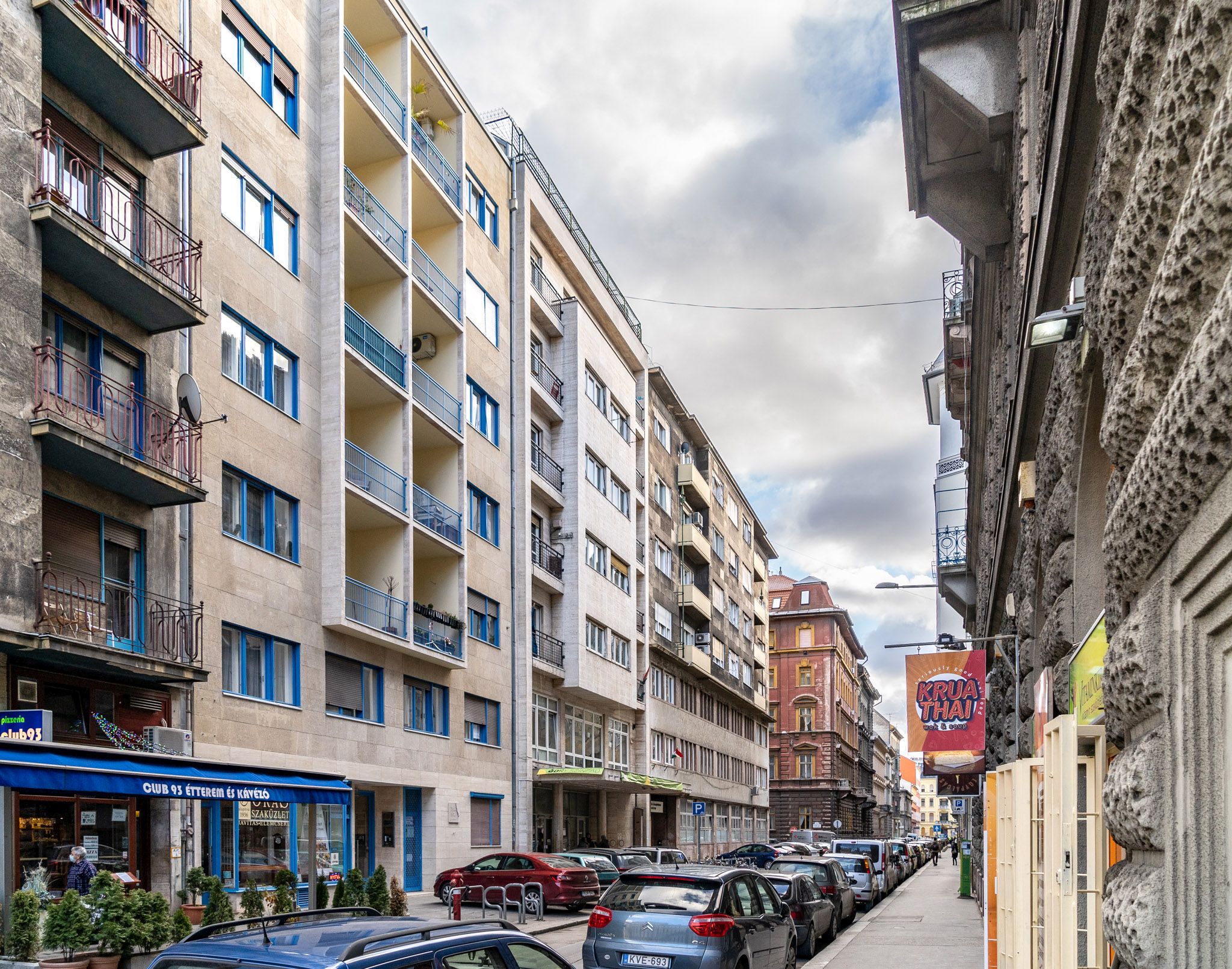
Vas Street today (Photo: Balázs Both/Pestbuda.hu)
Within, opposite the church's entrance, stood the most modern organ in Budapest. Some sources claim the instrument was destroyed in World War II, while others say it was removed and is now used by a congregation in the Budapest agglomeration. Due to the rooms high ceiling, a gallery was added, more than 300 hundred faithful could fit into the worship hall. The hall was built in the building's courtyard, allowing natural light to filter in, which gave the space a unique atmosphere. Light entered the clean, modern space through two long skylights lights on the coffered ceiling.
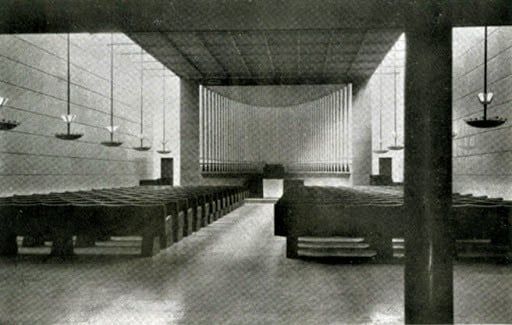
The interior of the church seen from the lobby (Source: Építészet, 1944. iss. 2)
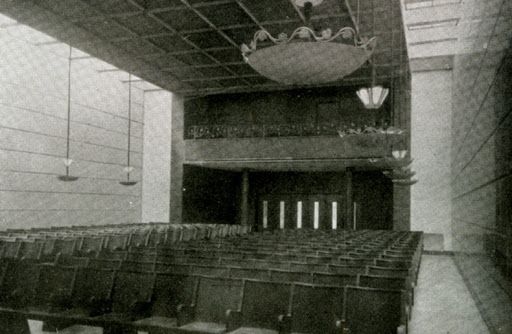
Interior of the Garrison Church seen from the pulpit (Source: Építészet, 1944. iss. 2)
The ground floor housed a cloakroom and a doorman's cubicle, and the staircase still visible today on the left side. The plant motifs of the railing smuggle some playfulness into the minimalist interior. The 1st, 2nd and 3rd floor of the building housed the offices and reception rooms used by the organisation, while guest rooms lined the 4th, 5th and 6th. Single rooms with balconies for unmarried workers filled the 7th floor, while the caretaker lived on the 8th next to the laundry room.
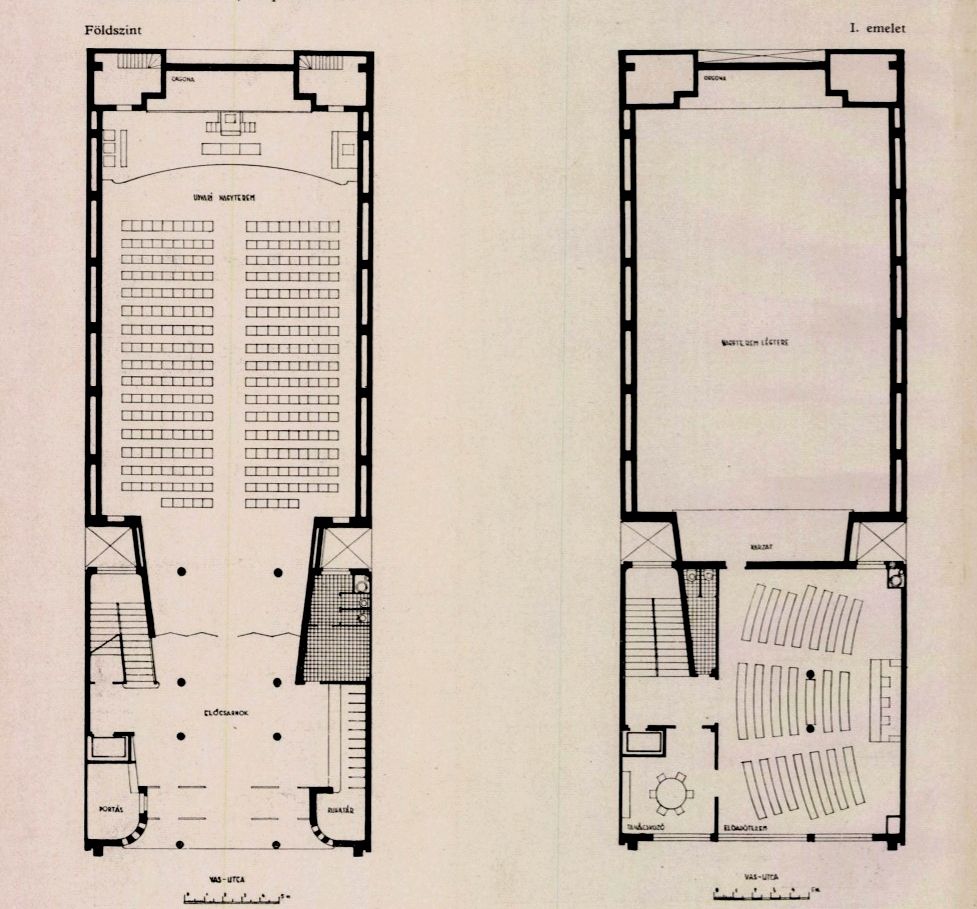
The building's floorplan (Source: Építészet, 1944. iss. 2)
The YMCA's Hungarian Branch was founded on 31 October 1883, but only officially recognised in 1892. Originally established in London in 1844, as an organisation to represent the Protestant spirit, its goal was to develop a healthy body, mind, and spirit. This organisation established the first scout group in Hungary, eighteen old soldiers' homes, camps, halls of residence, publishers, and popular colleges.
The organisation's size and strength are apparent from the fact that it could afford to construct such a large building in the difficult years of the 20th century, covering some of its expenses through donations. In addition to the Military Chaplaincy and the Protestant Garrison, several private individuals also donated, including the family of Pál Teleki, the former prime minister, and president of the national scout association, who died in 1941.
On 18 May 1950, the YMCA was disbanded and the building nationalised. Although Bishop Albert Bereczky tried to lease the hall of worship for the Reformed church, his efforts were unsuccessful. Subsequently, the students of the College of Theatre Arts next door held rehearsals in the church at times, until the building was finally handed over to the institution.
In 1958 the church hall was rebuilt as a chamber theatre. Troupes from other theatres performed here, and it also served as a venue for the college's exam performances. On 19 February 1959, it opened as the Ódry Theatre named after Árpád Ódry, the legendary actor, director and teacher of the nineteen-thirties. The hall was rearranged, seats were placed in curves to accommodate more people. On the first floor, a café was added in front of the gallery entrance while offices and rooms filled the floors above.
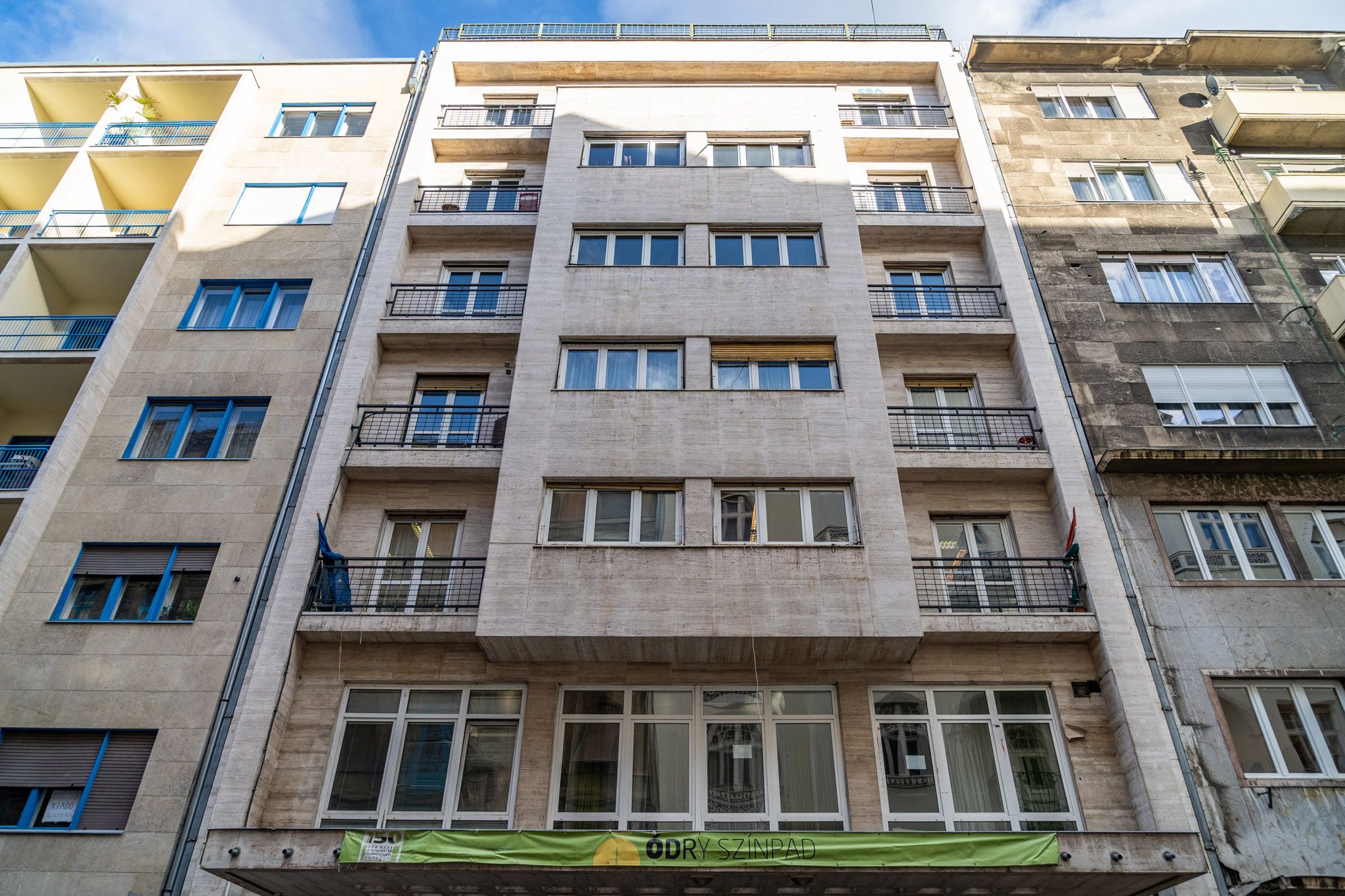
Ódry Theatre has operated in the building since 1959 (Photo: Balázs Both/Pestbuda.hu)
The neighbouring building is also currently used by the University of Theatre and Film Arts. Originally built as the headquarters of the Budapesti Kisipari Hitelintézet Rt. ('Budapest small industry credit institution') in 1942 following plans by Béla Jánszky, it was used by the Épületgépészeti és Villamossági Tervező Vállalat ('Mechanical and electrical planning company') from 1953 and was transferred to the University in 1983. The modern facades of the two stories suite each other. According to the original design, offices filled the lower stories, and rooms on the upper floors, which jutted out slightly.
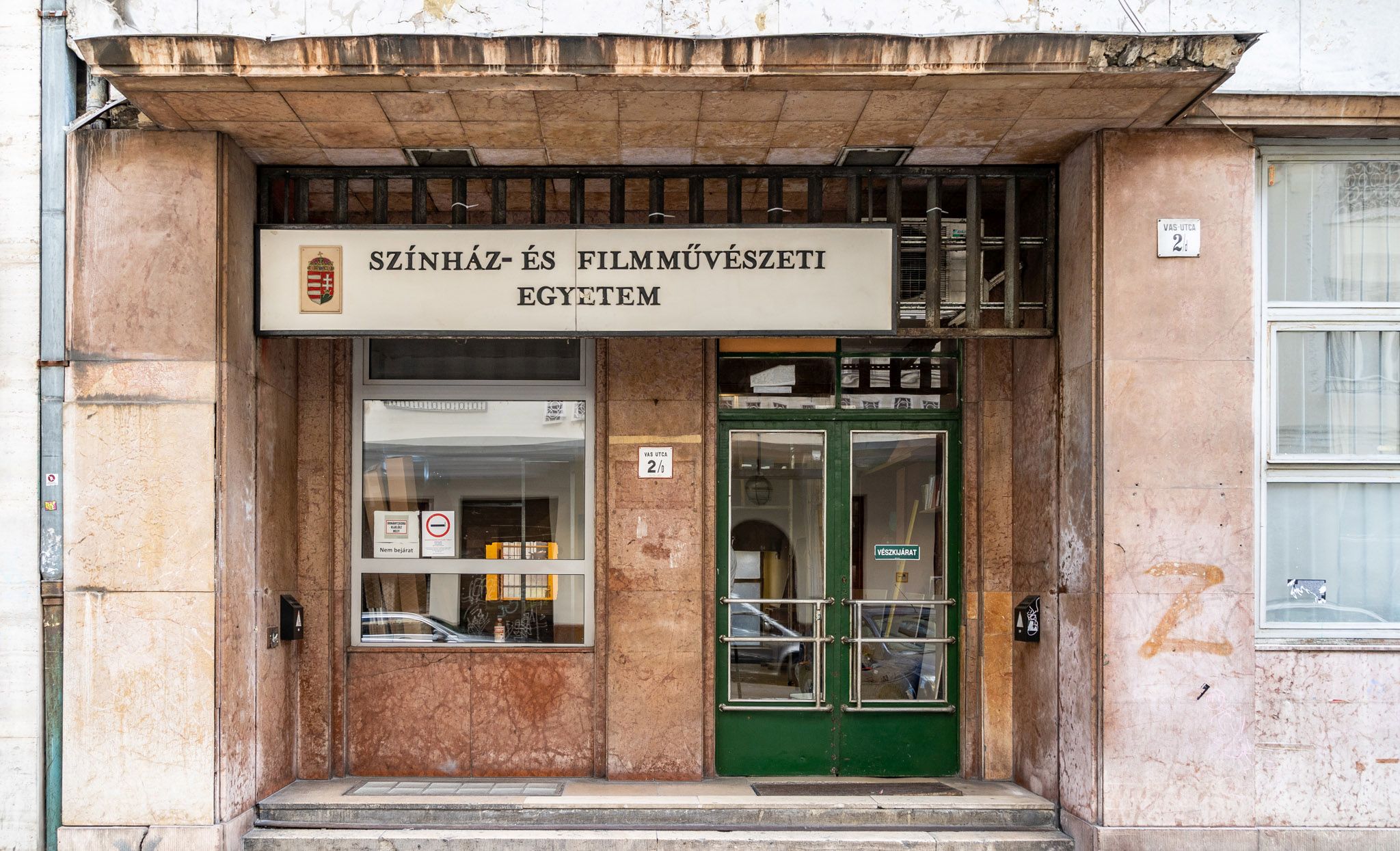
The entrance of the University of Theatre and Film Arts at 2/D Vas Street (Photo: Balázs Both/Pestbuda.hu)
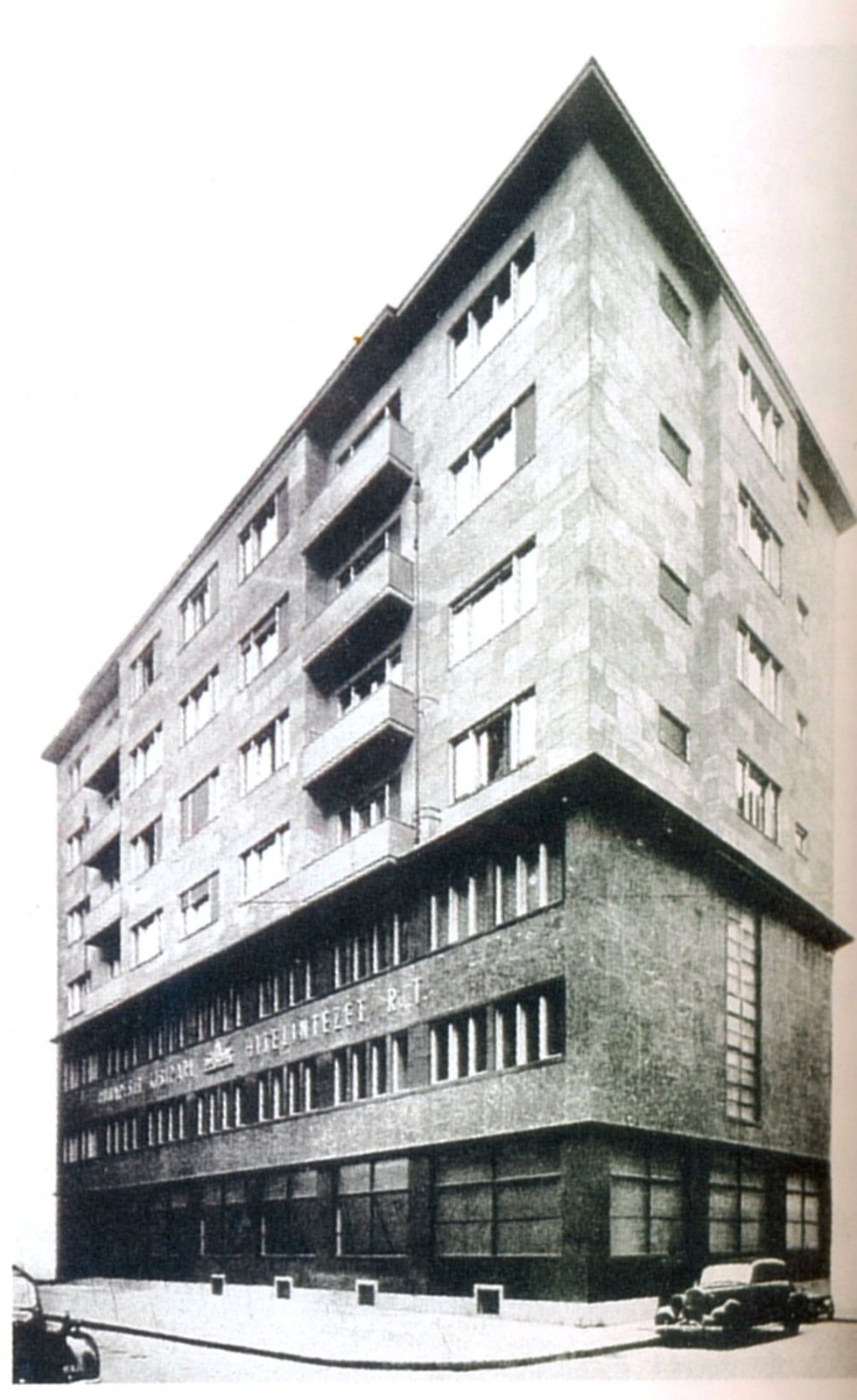
The facade of 2/D Vas Street in 1942 (Photo: Fortepan/No.: 156672)
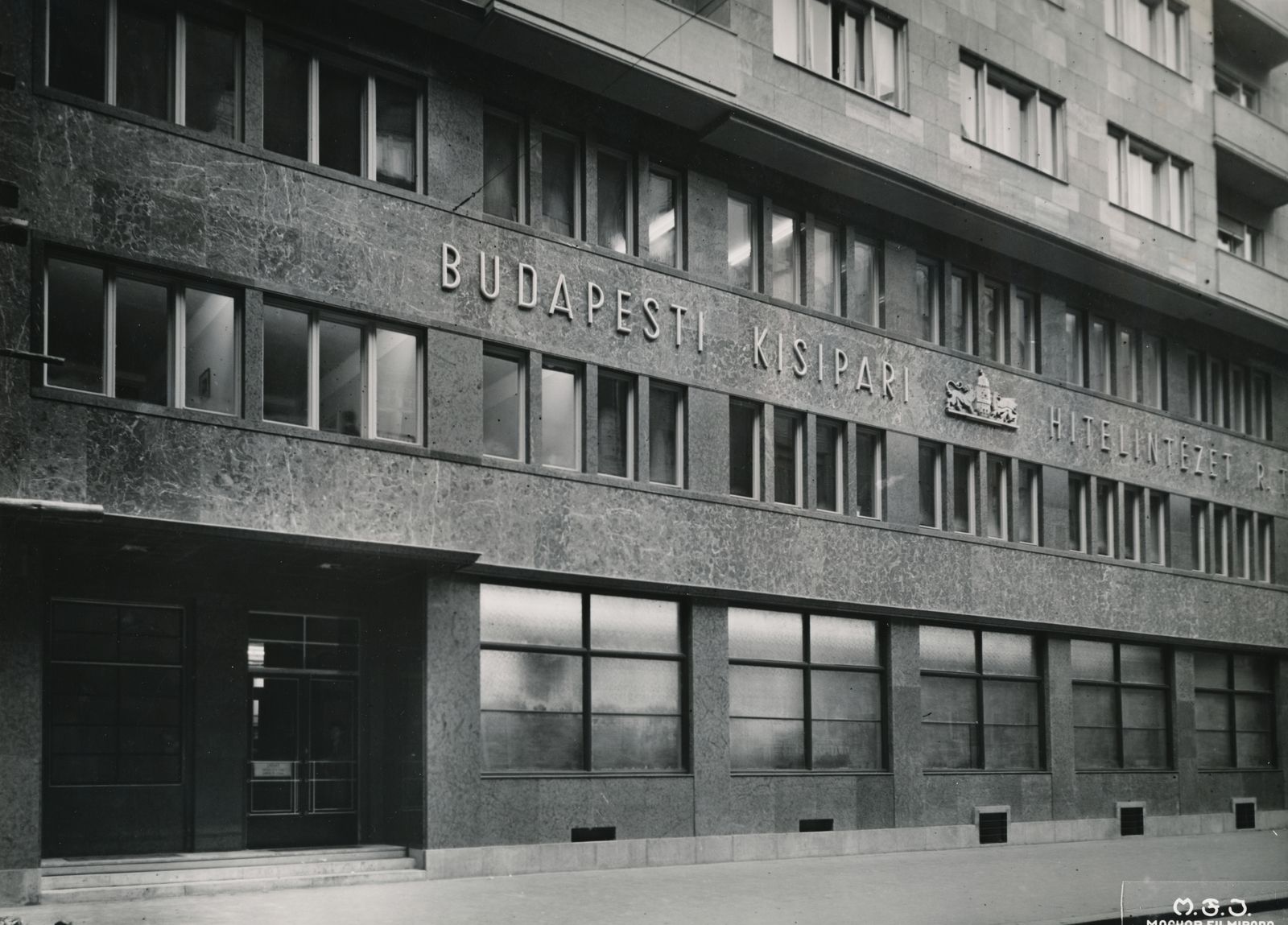
Entrance of 2/D Vas Street in 1942 (Photo: Fortepan/No.: 156679)
Although the YMCA was re-established in 1989, neither the building nor the church, which operated for only seven years, were returned to the organisation, and the University continued to use them.
Last December, reports floated the possibility that the University of Theatre and Film Arts needed a new campus. The SZFE operates at several locations in the city centre, Vas Street, Szentkirályi Street, and the building of the Uránia Film Theatre all house lessons. At the same time, the institution rents rooms and warehouses elsewhere.
The first press reports claimed that the University of Theater and Film Arts would move out of the buildings on Vas Street, and begin the second semester of the academic year in February in the former buildings of Duna TV in Buda. Students would be allowed to perform in the Uránia National Movie Theatre.
Following the publication of this article, the University of Theatre and Film Arts issued a statement on 15 January 2021 announcing that the Film Institute will move to Mészáros Street and operate under the name Zsigmond Vilmos Institute for Art in Motion Picture. Actor training would continue in the building on Rákóczi Street and Szentkirályi Street overseen by the Sinkovits Imre Institute for Theatre Arts. The institute responsible for theoretical training would be renamed the Németh Antal institute for Drama Theory, but no announcement was made regarding its new location. The university's leadership announced that the Uránia National Movie Theatre would serve both theatrical and cinematographic training in the future.
Cover photo: The main street entrance in 1944 (Source: Építészet, 1944. iss. 2)

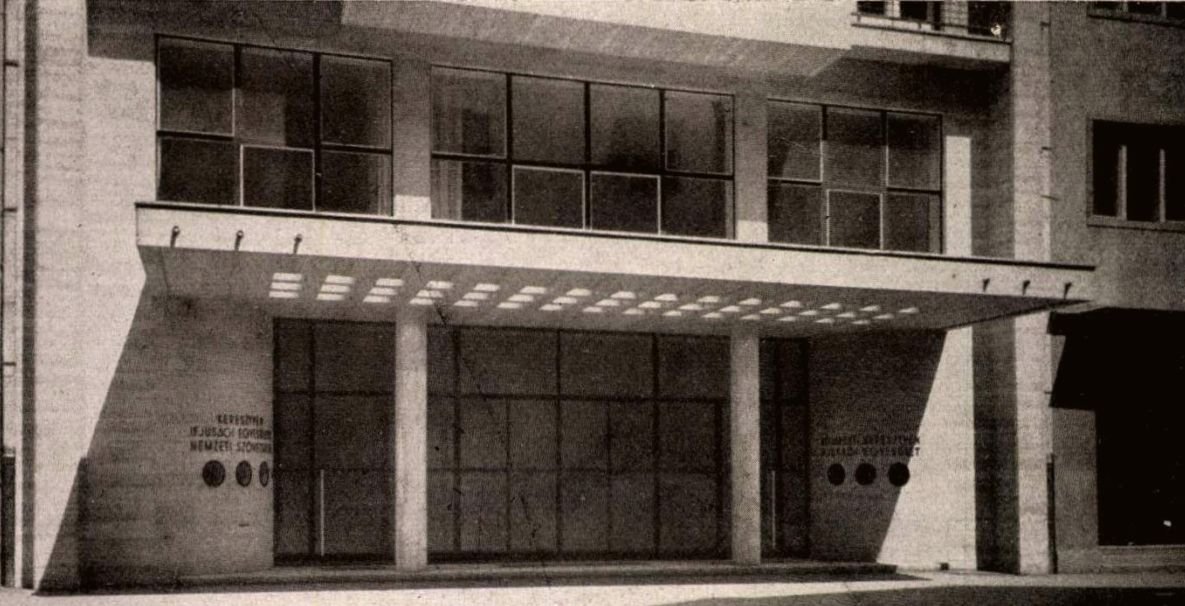



































Hozzászólások
Log in or register to comment!
Login Registration